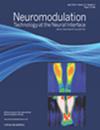Non-invasive Transcutaneous Spinal Cord Stimulation Programming Recommendations for the Treatment of Upper Extremity Impairment in Tetraplegia
IF 3.2
3区 医学
Q2 CLINICAL NEUROLOGY
引用次数: 0
Abstract
Objectives
This study analyzes the stimulation parameters implemented during two successful trials that used non-invasive transcutaneous spinal cord stimulation (tSCS) to effectively improve upper extremity function after chronic spinal cord injury (SCI). It proposes a framework to guide stimulation programming decisions for the successful translation of these techniques into the clinic.
Materials and Methods
Programming data from 60 participants who completed the Up-LIFT trial and from 17 participants who subsequently completed the LIFT Home trial were analyzed. All observations of stimulation amplitudes, frequencies, waveforms, and electrode configurations were examined. The incidence of adverse events and relatedness to stimulation parameters is reported. A comparison of parameter usage across the American Spinal Injury Association Impairment Scale (AIS) subgroups was conducted to evaluate stimulation strategies across participants with varying degrees of sensorimotor preservation.
Results
Active (cathodal) electrodes were typically placed between the C3/C4 and C6/C7 spinous processes. Most sessions featured return (anodal) electrodes positioned bilaterally over the anterior superior iliac spine, although clavicular placement was frequently used by 12 participants. Stimulation was delivered with a 10-kHz carrier frequency and typically a 30-Hz burst frequency. Biphasic waveforms were used in 83% of sessions. Average stimulation amplitudes were higher for biphasic waveforms. The AIS B subgroup required significantly higher amplitudes than did the AIS C and D subgroups. Device-related adverse events were infrequent, and not correlated with specific waveforms or amplitudes. Within the home setting, participants maintained their current amplitudes within 1% of the preset values. The suggested stimulation programming framework dictates the following hierarchical order of parameter adjustments: current amplitude, waveform type, active/return electrode positioning, and burst frequency, guided by clinical observations as required.
Conclusions
This analysis summarizes effective stimulation parameters from the trials and provides a decision-making framework for clinical implementation of tSCS for upper extremity functional restoration after SCI. The parameters are aligned with existing literature and proved safe and well tolerated by participants.
治疗四肢瘫痪上肢障碍的非侵入性经皮脊髓刺激方案建议。
研究目的本研究分析了两项成功试验中使用的刺激参数,这些试验使用非侵入性经皮脊髓刺激(tSCS)有效改善了慢性脊髓损伤(SCI)后的上肢功能。报告提出了一个指导刺激编程决策的框架,以便将这些技术成功应用于临床:分析了完成 Up-LIFT 试验的 60 名参与者和随后完成 LIFT Home 试验的 17 名参与者的编程数据。对刺激幅度、频率、波形和电极配置的所有观察结果进行了研究。报告了不良事件的发生率以及与刺激参数的相关性。对美国脊柱损伤协会损伤量表(AIS)亚组的参数使用情况进行了比较,以评估不同感觉运动保留程度的参与者的刺激策略:主动(阴极)电极通常放置在 C3/C4 和 C6/C7 棘突之间。大多数疗程中,返回(阳极)电极被放置在双侧髂前上棘上,但也有 12 名参与者经常使用锁骨电极。刺激的载频为 10 千赫兹,突发频率通常为 30 赫兹。在 83% 的治疗中使用了双相波形。双相波形的平均刺激幅度更高。AIS B 亚组所需的振幅明显高于 AIS C 和 D 亚组。与设备相关的不良事件并不常见,且与特定波形或振幅无关。在家庭环境中,参与者将其当前振幅保持在预设值的 1%以内。建议的刺激编程框架规定了参数调整的以下层次顺序:电流振幅、波形类型、主动/返回电极定位和爆发频率,并根据需要以临床观察为指导:本分析总结了试验中的有效刺激参数,并为临床实施治疗 SCI 后上肢功能恢复的 tSCS 提供了决策框架。这些参数与现有文献一致,并且证明是安全的,参与者也能很好地耐受。
本文章由计算机程序翻译,如有差异,请以英文原文为准。
求助全文
约1分钟内获得全文
求助全文
来源期刊

Neuromodulation
医学-临床神经学
CiteScore
6.40
自引率
3.60%
发文量
978
审稿时长
54 days
期刊介绍:
Neuromodulation: Technology at the Neural Interface is the preeminent journal in the area of neuromodulation, providing our readership with the state of the art clinical, translational, and basic science research in the field. For clinicians, engineers, scientists and members of the biotechnology industry alike, Neuromodulation provides timely and rigorously peer-reviewed articles on the technology, science, and clinical application of devices that interface with the nervous system to treat disease and improve function.
 求助内容:
求助内容: 应助结果提醒方式:
应助结果提醒方式:


